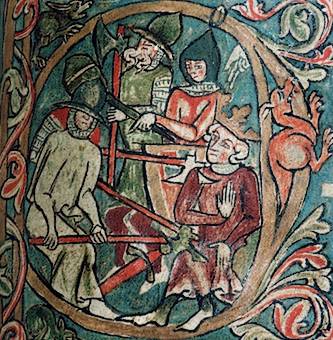
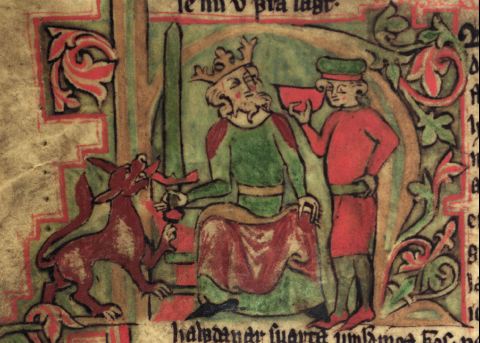
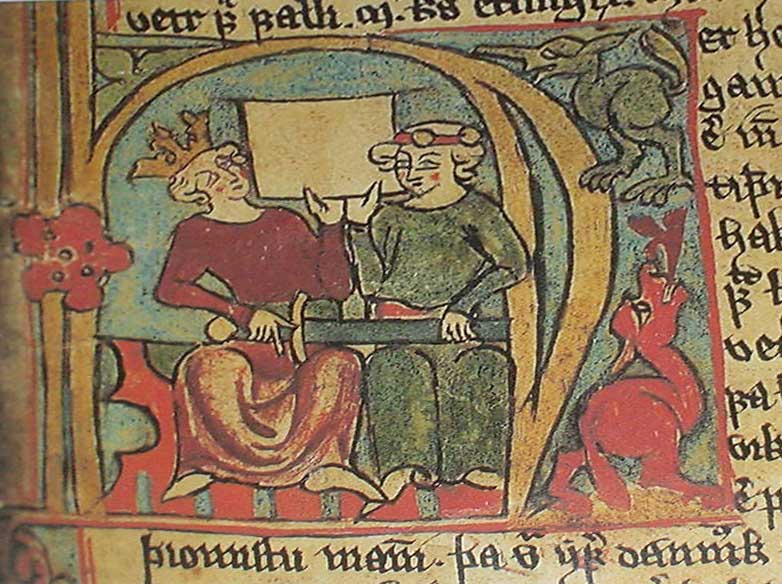
 |
 |
 |
We will be watching three viking-themed films in this course. You are asked to post a short, written response to each film; you are also asked to read your classmates' responses and, to the extent you find them interesting & helpful in sharpening your historical understanding, respond to them too, allowing for an online discussion.
Due dates: response to the 1st film due 25 March 2012, no later than 12:00 noon; response to the 2nd film due 8 April 2012, no later than 12:00 noon; response to the 3rd film & any final, overview discussion due 15 April 2012, no later than 12:00 noon; please post your responses & discuss them in the Discussion Board section on the companion BlackBoard site.
Length: recommended 1-2 paragraph(s) for each film.
References: quotations from the film you are responding to should include full bibliographic information; please identify as clearly as you can which scene(s) you’re referring to and quote as accurately as you can. (I will make allowances, as necessary, for the difficulty of pinning down the exact words spoken on film.) You should also provide full references for any other source (1ary, 2ndary, textual, visual, etc.) you draw on. Any recognisable reference format (Chicago, MLA, Turabian, etc.) is fine, so long as references are clear, consistent & complete.
If you are unsure how to write references (which can, indeed, be quite tricky when dealing with film), please consult one of the many aids available to you (primarily Gordon Harvey, Writing with Sources, 2nd edn [2008], but also works like Diana Hacker, A Pocket Style Manual , 6th edn [2011], on the recommended readings list, or the Viking Age research guide webpage). If you still can't find an answer to your question, your instructor will, of course, be happy to help.
Rationale for this exercise
The films are intended for your delectation, but also as a way to stimulate your thinking about how one represents the past (which is, after all, what all historiography does) and about the post-medieval afterlife of the Viking Age (in preparation for the final assignment). Considering these movies as a type of secondary source, which attempt to render accurate historical reconstructions of the past, you might think about their success on two main axes:
1. How authentic are they? Is their portrayal of the past trustworthy? In what way(s) is it more or less reliable? What, according to your own understanding of Viking Age history, do the films get right? In what ways do they fall short, in your opinion, and what would you have done differently?
2. How effective are they at evoking the past? Do these films help you get an historical sense of the Viking Age, and if so how? How does the cinematic medium enable them to reconstitute history in way(s) different from those of printed text? Do they do a good job of it? If so, how, and if not, why not?
Writing short responses is meant to allow you to reflect on your personal reaction to the films. Reading your peers' responses may provoke further, new thinking, allowing for discussion to refine your reactions..
Procedure
Watch the three viking-themed films listed below with a careful, critical eye: you are watching them as an historian seeking to learn about the Viking Age, not just for entertainment purposes. The 1st two are also available for private viewing in Uris Library (via course reserve).
Respond briefly to each film on the companion BlackBoard site's discussion board. Please consider each film in its entirety; you certainly may choose to focus on select episodes or issues, but you should evaluate these within the context of each film as a whole. You should grapple with the questions raised above, based on your perception and analysis of the films in themselves, as well as on comparison with the various primary and (other) secondary sources you are familiar with. (For example, if the films show Norsemen composing or performing poetry, you may wish to consider whether what you know from other sources — skaldic and eddic verse itself, saga accounts of poets’ behaviour, modern historians’ discussions of the topic, etc. — accords well with the movie version, whether the movie helps you understand Norse poetics in some new way, etc.) Responses may be as (in)formal as you wish; I'm interested in seeing what you make of these films.
Read your classmates' responses and discuss any further insights they may give you. (Gaining insight from a response doesn't necessarily mean you have to agree with it; disagreement may be a productive way of thinking further about your perception. Remember to muster evidence and arguments in favour of your opinion!)
It is not necessary to conduct any research concerning these films, though you certainly may search out any sources you think could be helpful in appreciating them. You may find it useful to think about the materials you view by reading Arthur Lindley's The ahistoricism of medieval film and Paul Halsall's Thinking about Historical Film: Is it Worth the Trouble?. These offer good perspectives on the kinds of questions one needs to consider when thinking about historical films (though one might quibble with their answers).
Please be sure to observe netiquette in all your postings.
The Vikings Thu., 15 March 2012, 19:00, 165 McGraw Hall |
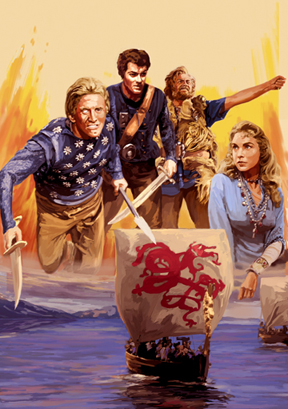 |
|
promotional poster for the most authentic viking film ever made (word) |
||
Beowulf & Grendel Thu., 5 April 2012, 19:00, 165 McGraw Hall |
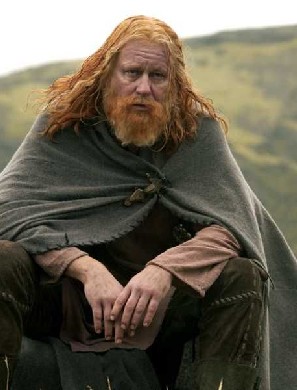 |
|
Stellan Skarsgård as King Hroðgar |
||
Útlaginn ("Viking Outlaw") Thu., 12 April 2012, 19:00, 165 McGraw Hall
This 1981 Icelandic film is an adaptation of Gísla saga, written and directed by Ágúst Guðmundsson and starring an Icelandic cast. We will show a snippet of the original Icelandic film, as well as the dubbed English version. Unfortunately the VHS tape is in quite lousy shape, so both the sound and the picture quality leave something to be desired. This film is not readily available for private viewing so it's especially important that you come in to watch it with your classmates. You may wish to consult Gísla saga, available on course reserve in Uris Library, and/or this cheat sheet. |
|
|
Arnar Jónsson as Gísli Súrsson |
Questions?
Please be sure to contact Oren if you run into any difficulties.
Good luck!
return to HIS 3200 syllabus
Oren Falk, Associate Professor
Department of History, Cornell University
Page last updated on: 19 March, 2012